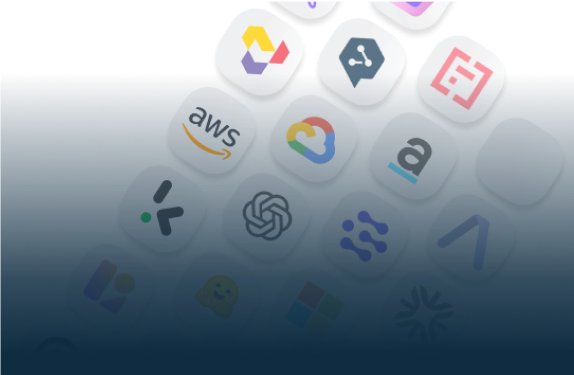
Start Your AI Journey Today
- Access 100+ AI APIs in a single platform.
- Compare and deploy AI models effortlessly.
- Pay-as-you-go with no upfront fees.
.webp)
In today’s fast-paced digital era, Artificial Intelligence is increasingly integral to company processes, enhancing tasks like email drafting, report writing, and customer support. Despite their advanced capabilities, LLMs can generate inaccurate or inappropriate content and raise privacy concerns with sensitive user data. AI guardrails address these issues by ensuring safety and reliability through comprehensive protection for both input and output.
AI guardrails are essential mechanisms designed to ensure the safe and ethical operation of AI systems, particularly large language models (LLMs). These guardrails help prevent AI from generating harmful, inaccurate, or inappropriate content by imposing checks and balances on both the input it receives and the output it produces.
.svg)
For LLMs, which are used in a wide range of applications from customer support to content creation, the need for such guardrails is critical. They protect against risks like data privacy breaches, biased responses, and the spread of misinformation.
The problem with LLMs is essentially one of trust. How do we know that these models—along with the users and customers—will stay within safety and ethics bounds? Unless properly safeguarded, the risks of using LLMs can quickly outweigh the benefits.
Guardrails are essential to ensuring accuracy and compliance for the content generated by LLMs. These safeguards not only maintain brand protection and quality but also play a critical role in Compliance Risk Management, helping organizations adhere to regulatory standards, mitigate risks, and ensure ethical AI usage. These safeguards are maintained for all crucial use cases, spanning from medical marketing to legal and academic writing:
Ensure AI-generated medical marketing content adheres to strict guidelines
Generate legal documents, contracts, and policies that conform to:
Produce research papers, essays, and academic content that follows:
Maintain consistent brand voice, tone, and style across all AI-generated content, ensuring:
An ideal system of AI Guardrails must treat both the input (the prompt) and the output (the LLM response). Such guardrails contribute as a measure to ensure that interactions with the LLM remain safe, accurate, and aligned with the policies and ethical standards of the company.

Eden AI has a good safeguard solution in place concerning LLM use via its protective and extensive workflow builder, supported by multiple AI models including OpenAI, Mistral, Replicate, Perplexity AI, Microsoft, Anthropic, Meta AI, AWS, Emvista, Cohere, and Google Cloud. The following section elaborates on the role that each of these plays in ensuring LLM interactions are safe and secure.
%20(1).svg)
Installing guardrails around large language models enhances the quality, reliability, and trustworthiness of AI by preventing failures. By integrating multiple LLMs and AI APIs, organizations can create a robust system for text generation moderation evaluation.
Eden AI simplifies this process with a pre-built template that consolidates all these safeguards into a single workflow.
Here’s how to get started:
Start by signing up for a free account on Eden AI and explore our API Documentation.
Access the pre-built LLM Guardrails workflow template here. Save the file to begin customizing it.
Open the template and adjust the parameters to suit your needs. This includes selecting providers and fallback providers optimizing inputs and outputs, setting evaluation criteria, and other specific configurations.
Use the Eden AI’s API to integrate the customized workflow into your application. Launch workflow executions and retrieve results programmatically to fit within your existing systems:
.svg)
Utilize the collaboration feature to share your workflow with others. You can manage permissions, allowing team members to view or edit the workflow as needed.
.svg)
The times are calling more than ever for strong LLM usage guardrails to be in place while AI is becoming increasingly endemic in business processes. This workflow can be extended not only to use cases for topics of relevance and safety but also to involve bias detection and compliance checks, among so much more. By designing holistic safeguarding measures, a company can protect itself, and its users, and realize the full power of LLMs to safely, ethically, and effectively perform their functions.
Basically, it is all about how much faith we put into large language models. How can we be sure that neither these models nor the users and customers who exploit them, will overstep safety and ethical boundaries? If not properly secured, risks from LLMs' usage can outweigh benefits quite quickly.
It does this quite easily by instantiating workflow and API with a pre-built safeguard configuration, putting all of these checks in one place. Be it an engineer, business leader, or content creator, the Eden AI LLM Guardrail Workflow comes fully equipped to ensure LLM integrity.


You can start building right away. If you have any questions, feel free to chat with us!
Get startedContact sales
